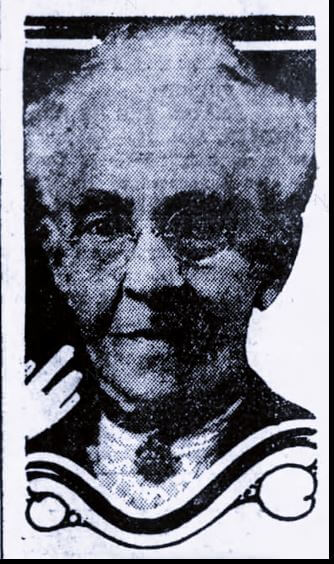EUGENIA B. FARMER
- Program
- Subject
- Location
- Lat/Long
- Grant Recipient
-
National Votes for Women Trail
-
People
- 326 Madison Ave, Covington, KY 41011, USA
- 39.087431, -84.510888
-
National Collaborative for Women's History Sites
EUGENIA B. FARMER
Inscription
EUGENIA B. FARMERSTATEWIDE SUFFRAGE LEADER.
LED FIGHT FOR WOMEN'S
SCHOOL SUFFRAGE IN KY.
HELPED HOST STATE SUFFRAGE
CONVENTION HERE IN 1897.
WILLIAM G. POMEROY FOUNDATION 2021
Kentucky suffragist Eugenia B. Farmer (1835-1924) was a statewide leader in the fight for women’s right to vote. In 1888, Farmer helped to establish the Kenton County Equal Rights Association (ERA) and served as president of the organization. She also served as the corresponding secretary of the Kentucky ERA. In 1894, Farmer led the successful campaign for school suffrage that was won in the Kentucky cities of Lexington, Covington, and Newport. On the front page of the December 1, 1894 edition of The Woman’s Journal, a national suffragist periodical, it was reported that:
Mrs. Eugenia B. Farmer, of Covington, Ky., corresponding secretary of the Kentucky Equal Rights Association, is busily engaged in instructing the white and colored women of Covington in their duties and privileges of voting for the Board of Education in that city.
On October 14 and 15, 1897, Farmer and the Kenton County ERA hosted the ninth annual convention of the Kentucky ERA in the Guild Hall of Trinity Church on Madison Avenue in Covington, Kentucky. The state convention would be held here again in 1901 and 1903.
Despite the efforts of Kentucky suffragists, the Kentucky legislature revoked partial suffrage for women in 1902. It was reinstated in 1912, but now with a literacy test for women voters.
Finally, on June 4, 1919, the United States Congress passed the Nineteenth Amendment which reads, “The right of citizens of the United States to vote shall not be denied or abridged by the United States or by any state on account of sex.” On January 6, 1920, Kentucky ratified the Nineteenth Amendment and by August of that year, the necessary 36 states had ratified the amendment, securing women’s right to vote across the United States.

